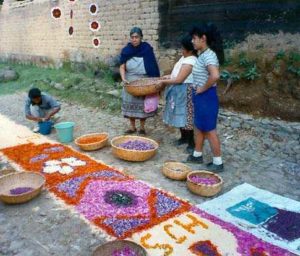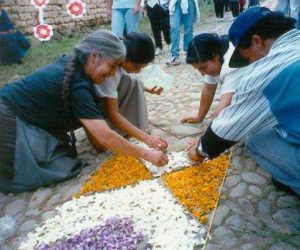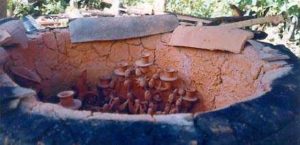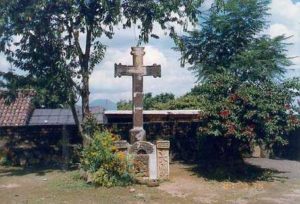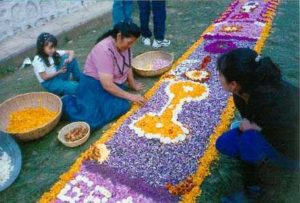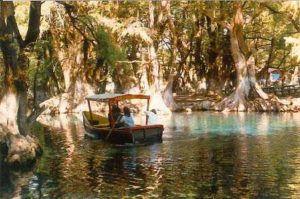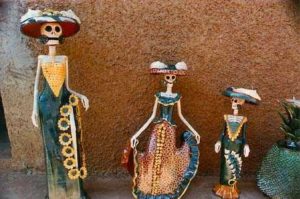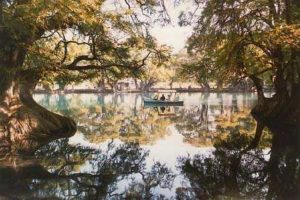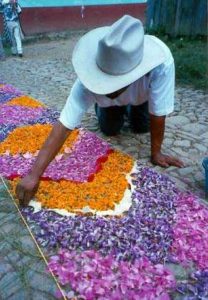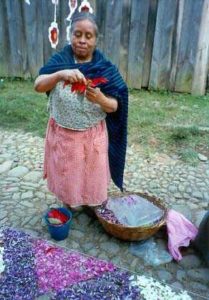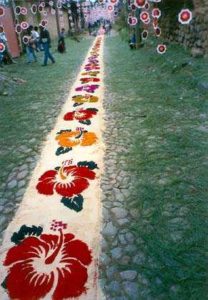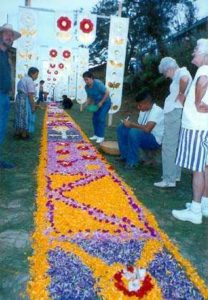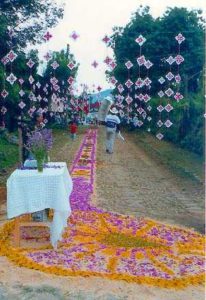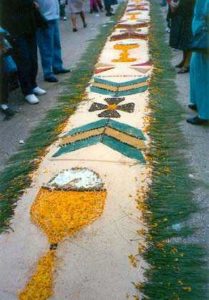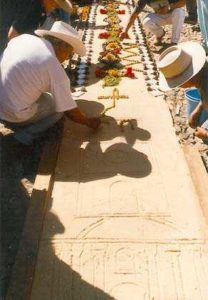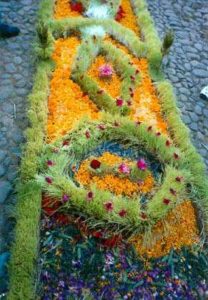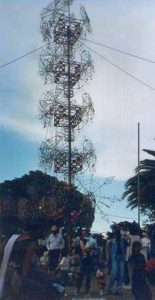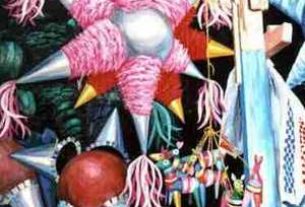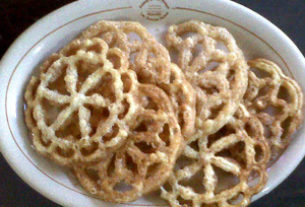As thousands prepare for the trek to Patzcuaro, and the famous Day of the Dead Celebration, others head for the regional celebration in Patamban known as the “Fiesta de Cristo Rey”. Held on the last Sunday in October, the entire village turns out to “paint their streets with flowers,” the celebration is to honor the day Christ was embraced as the Son of God.
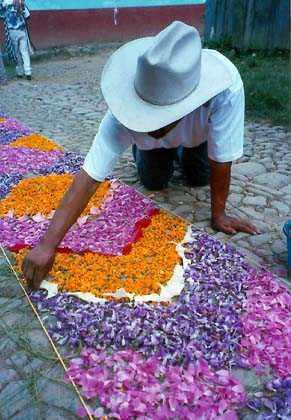
We first heard of the festival from a friend. Curious, we went to the Internet to find out more about it. Lo and behold, there was no mention of Patamban, nor the festival. After finally locating Patamban on the map, we discovered it was southeast of Guadalajara. We also saw that the city of Zamora was only about an hour’s drive from Patamban, and went back to the Internet for names of hotels. We only found one, Hotel Meson Del Zalle, but the accommodations sounded good, so we emailed them for a reservation. Our map indicated that the distance from Guadalajara to the turnoff of the Autopista (Mexico 15) was 143 kilometers, with Zamora another 16 kilometers south from that point.
We drove by car, leaving Ajijic after breakfast. We arrived in Zamora about three hours later. Our hotel was located just out of the city, in a little town named Jacona, so it took a few stops to get directions. However, when we arrived we were pleasantly surprised. Very nice rooms with TV and telephone, a large lounge area and pool on the grounds, and a very nice restaurant. A double room rate was 485 pesos.
We had lunch at the hotel, and decided to take an advance look at Patamban. The festival was not due to be held until Sunday, October 31st. We had friends with us and they were anxious to check out the village of San José de Gracias, which is known as the village of “Green Pineapples and Pigs.” Although very a very small village, the natives had displays of their pottery along the main road. The pineapples and pigs came in all different sizes, and in colors other than green. As we stopped to look, several small children came up asking us to come to their casa to see their family’s pottery.
Approximately thirty minutes later, we came to the village of Ocumicho. This village is famous for their well-known devil figures and masks. We walked into an area where several of the village huts were close together, the natives sitting outside patiently painting the famous devil masks. Each mask seemed to be one-of-a-kind. Although there were probably only a handful of village houses, the children were eager for us to see the wares made by their family.
After a few purchases, we headed for Patamban, about 15 minutes away. As we came loser to our destination, the fields of wild flowers become so prolific that you could see them in the distance as acres of colors of the rainbow. Each mile revealed more and more fields covered with the wildflowers, and on both sides of the road. We began imagining all the residents hurriedly picking the flowers for the next day’s festival, and “painting their streets with flowers.”
When we arrived in the village, there was no activity, other than several men working on the fireworks displays. There was a market, so we wandered through it, ending up in the age-old courtyard of the church. The ancient church had finally given up, due to age, and rotting wood. The huge cast-iron bell now hung from a nearby tree, trussed up, with a wire running to the old church, so it could be rung from there.
The village itself is quite small, six streets wide, and eight streets long, all made of cobblestones. I would guess the population at about 200. The streets lead up to the Plaza, and the very ancient church next to it. A few merchants had set out their wares around the gazebo in the plaza, but a 15 or 20 minute walk around the village allowed you to see it in its entirety.
The Purepecha natives have very distinct facial features that differentiate them from the Mexican people in areas such as Guadalajara, only three hours away. They appear to be quite shy, and many seemed not to understand Spanish. However, we found them extremely friendly and courteous. We always asked if they objected to having their picture taken, mostly by hand language pointing at them, and then at the camera. That usually produced a nod, and a very shy smile.
As we headed back to our hotel in Zamora, I think we were all wondering if it would be worth the trip back the next day. We had dinner in the hotel, and left about 9 a.m. the following day. We jokingly decided that the villagers were probably out all night picking the wild flowers for the next day decorations.
Our first surprise was as we approached San José de Gracias again. The amount of merchandise that was on display alongside the road had greatly increased, from the previous day. As we began to approach Pantamban, we could see a road block ahead, with traffic being diverted for parking. The reason became clear, the main road was lined with tour buses, all angled off the road. We estimated 800 or more. Parking for private automobiles was diverted to vacant land on each side of the road, while the main road was a sea of humans, all walking into the village.
Expecting to walk on a carpet of flowers on each street, we were surprised to see the villagers hard at work. On four or five of the main streets, they had placed long wooden forms the length of the street, approximately two feet wide and a few inches deep. These had been filled with sawdust, and patted down to compact it. Cardboard templates had been constructed with cutouts in various designs. These were placed on top of the sawdust, and then the design was made by placing brightly colored sawdust in each of the cutout sections. Buckets of colored sawdust were scattered along the form, allowing them to choose a particular color for a certain cutout. Once the design was finished, the template was carefully lifted up, leaving a beautiful design. There were also buckets containing small wild flowers, or wildflower pieces, in every color imaginable. The villagers carefully selected the flowers and worked them into the sides of the form, and outlined the various designs with them.
The children were as busy as the adults, everyone working furiously to complete their “painting with flowers” prior to the beginning of the festival. We later learned that residents of each street were responsible for the design, construction of templates, mixing color into the sawdust, and the final placement in the form. While strewing the streets with wildflowers would have been a simple task, the planning and artistic ability required to construct the forms and designs, was a labor of love. This obviously was an effort on the part of the villagers that probably required a year’s planning, to vary the designs from year to year. We also learned that there would be competitive judging of the “painted streets” the next day.
As the crowd began to form in the church courtyard, we joined them. The crowd began to sing and holding their hands up in air, swayed from side to side, a joyous tribute to Christ. An altar had been erected outside, where it was obvious communion had been offered that morning. A table for collections stood next to an architectural drawing for what would obviously be their new church. Those who donated were presented with a very tiny pottery jar attached to a safety pin, to wear on their clothing.
Since we were returning straight to Ajijic that day, we left in the afternoon. Walking to our car, and on the main road, we encountered a solid string of cars and pedestrians heading for the village. This stream of visitors did not lessen until we were on the other side of San José de Gracias. I am certain there were as many visitors on the way to the festival, as there were already in the village.
Our biggest surprise was the fact there were not over 30 Anglos there, the rest of the crowd was Mexican. While our choice of the festival was over our choice of the Day of the Dead ceremony the next day, it was an excellent one. It is a festival that will be ever-changing, with new designs for the flowers each year, and one I would go back to year after year.

